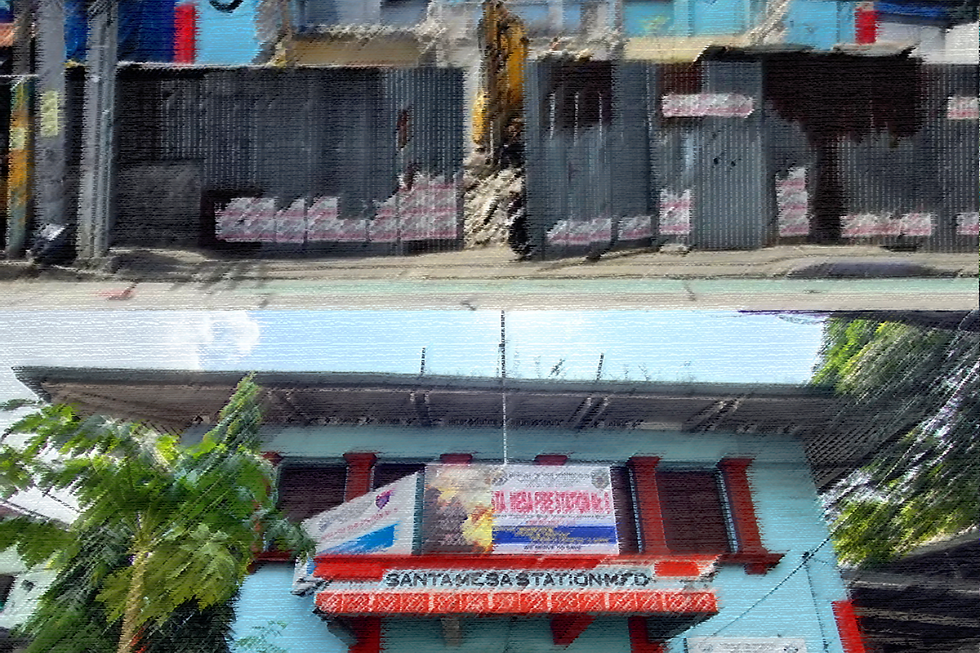When Progress Forgets: Nothing Burned, But Everything Was Lost
- The Communicator
- Aug 20
- 3 min read
For more than a century, the Sta. Mesa Fire Station stood at a busy corner of Ramon Magsaysay Boulevard—a steady part of the neighborhood’s rhythm. Most passed by without a second glance, never realizing how long it had stood or what it had endured.
Built in 1919, it was one of Manila’s oldest fire stations—surviving floods, fires, and even the brutal bombings of World War II, which left much of the city in ruins. But in early June 2025, the Sta. Mesa Fire Station was demolished—not by calamity, but by the advance of infrastructure. That kind of endurance deserved recognition.
But sometimes, history doesn’t crumble. Sometimes, it’s pushed aside.

A Silent Sentinel
Also known as Fire Station No. 8, the Sta. Mesa Fire Station is considered a pre-war fire station in Manila. It had reportedly preserved original firefighting equipment—alarm bells, a fireman’s pole, even early telegraph machines.
Over time, the station became more than a firehouse—it became a living remnant of the city's layered history, tucked away behind the daily chaos of traffic, busy streets, and commuters.
Bulldozers and Red Tape
In 2024, concerns about the station’s future emerged after it was confirmed to lie in the path of the NLEX Connector, an 8-kilometer elevated expressway linking C3 Road in Caloocan to the Skyway in Manila. By March 2025, the station was vacated and fenced off. Demolition began in early June, and by June 5, rubble replaced what had stood for over a century.
Heritage groups like Renacimiento Manila and Manileños for Heritage publicly questioned the demolition, citing the National Cultural Heritage Act of 2009 (Republic Act No. 10066), which automatically protects structures over 50 years old unless declared not culturally significant by the National Commission for Culture and the Arts (NCCA) or the National Historical Commission of the Philippines (NHCP).
Despite this safeguard, the NHCP reportedly granted demolition clearance. No public consultation was announced. Proposals to relocate the structure or preserve key components were raised, but none pushed through.
In the end, the site was cleared to make way for construction.
We’ve Seen This Before
For many heritage advocates, Sta. Mesa Fire Station’s fate follows a familiar pattern.
The Jai Alai Building, known for its Art Deco architecture, was demolished in 2000 despite protests. The historic Army Navy Club, El Hogar Filipino, and the Avenue Theater all faced similar endings—demolished or abandoned in the name of modernization.
Each loss might seem small on its own. But taken together, they show a troubling trend: when progress comes knocking, history is often the first to go.
And the cost? A city that forgets where it came from.
What Now?
To most commuters and passersby, it was just another old building. But to those who knew, the Sta. Mesa Fire Station represented a century of service, survival, and stories.
It was proof that Manila, for all its reinventions, still held onto parts of its past. That even as high-rises emerged and roads expanded, something quietly endured.
Until it didn’t.
So here’s the question for our generation, especially for students walking the same streets: If a structure that survived war, natural disasters, and time can be erased without resistance, what else are we willing to lose?
Because maybe Sta. Mesa didn’t just lose a fire station.
Maybe we lost another reason to remember who we are.
Article: Jeraldine Catalan






Comments